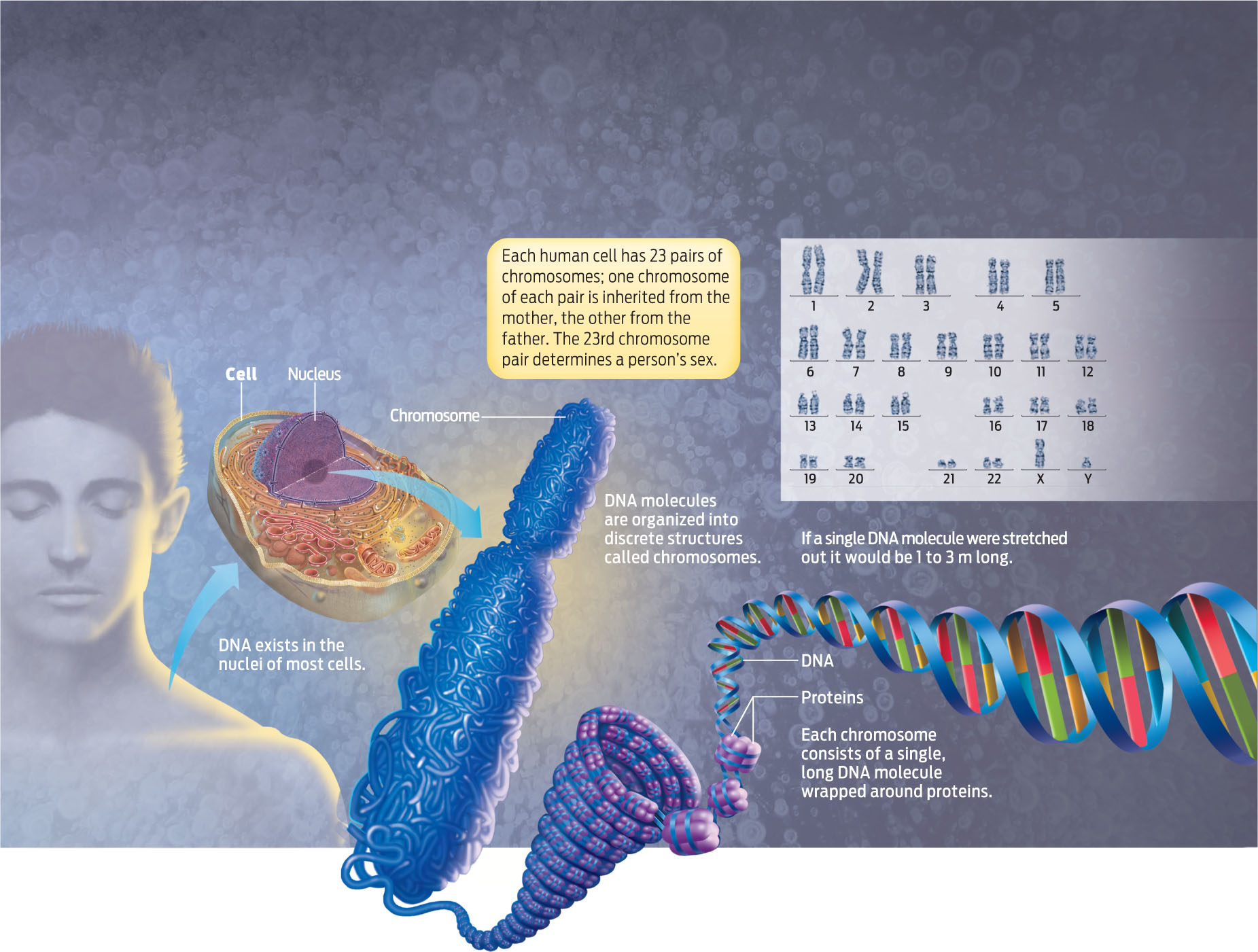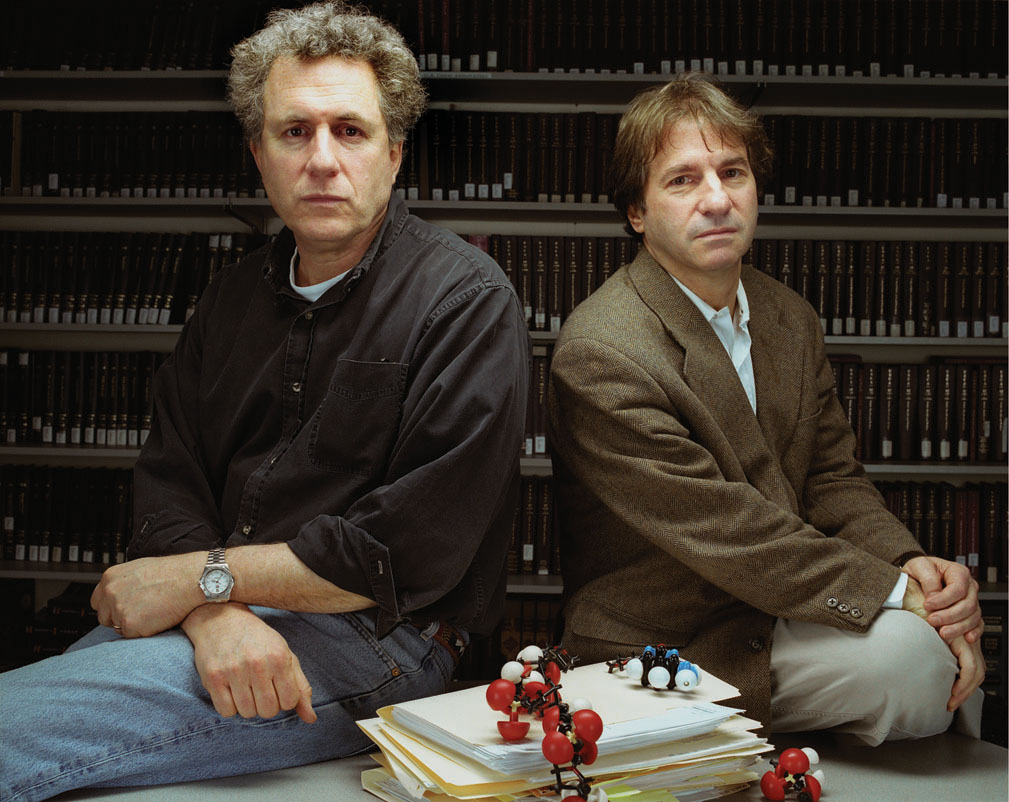DNA AS EVIDENCE
When the jury convicted Brown in 1992, DNA testing was still in its infancy, so DNA was rarely used as evidence in criminal cases. But over the next decade, DNA testing became a standard part of court cases, as science increasingly showed that it was an extremely accurate way to match crime scene evidence to perpetrators.
DEOXYRIBONUCLEIC ACID (DNA) The molecule of heredity, common to all life forms, that is passed from parents to offspring.
How can scientists use DNA to identify a person? The answer lies in the chemical makeup of this molecule, often referred to as the blueprint of life. Deoxyribonucleic acid, or DNA, is the hereditary molecule that is common to all life forms—from bacteria to plants to humans—and that is passed from parents to offspring. DNA serves as the instruction manual from which we are built; it’s the reason children resemble their relatives—parents, an aunt, perhaps even a grandparent.
CHROMOSOME A single, large DNA molecule wrapped around proteins. Chromosomes are located in the nuclei of most eukaryotic cells.
Where can you find DNA? The molecule exists inside the nucleus of almost every cell in our body in the form of chromosomes, strands of DNA wound around proteins. Humans have 23 pairs of chromosomes in the vast majority of their cells; we inherit one chromosome of each pair from our mother and the other from our father, for a total of 46. The 23rd chromosome pair consists of the sex chromosomes, X and ?, which determine a person’s sex. Fathers have an X and a ? and can pass on either. Mothers have two Xs and therefore can pass on only an X. Children who inherit a ? from dad and an X from mom are males. Since nearly all cells contain DNA, scientists can collect evidence such as blood, semen, saliva, or hair from a crime scene and extract DNA from it to identify a perpetrator (INFOGRAPHIC 7.1) .
Deoxyribonucleic acid, or DNA, is the hereditary molecule common to all living organisms. It is the instruction manual from which an organism is built.


DNA testing has helped the Innocence Project free more than 300 people from prison since 1992, including 18 who served time on death row. The technology has not only given these people their lives back but has also thrown a spotlight on our flawed criminal justice system. Why were people wrongly convicted and placed on death row? Innocence Project lawyers have found the usual suspects: dishonest witnesses, unscrupulous police officers, apathetic or overburdened lawyers, mistakes in eyewitness identification. But perhaps even more important, DNA technology has helped find ways to improve the system.
139
“DNA is only one example of how advances in science have made the criminal justice system more reliable,” says Peter Neufeld, who, along with Barry Scheck, both from the Benjamin N. Cardozo School of Law in New York City, founded the Innocence Project. “But what we really hope to do now is use DNA as the gold standard of reliability to weed out junk science.”
140